Review: Coolpad Canvas for Cricket Wireless
Jul 27, 2017, 3:00 PM by Eric M. Zeman
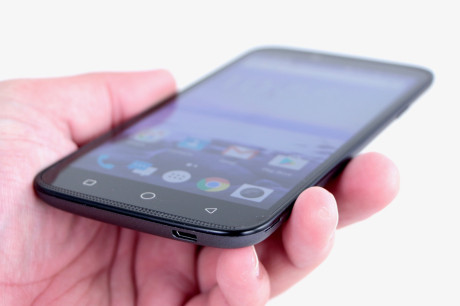
The Canvas from Coolpad is one of the least expensive handsets in Cricket's lineup of Android smartphone. It boasts a large display, 8-megapixel camera, and Snapdragon processor. If you need a low-cost point of entry, the Canvas is a respectable option. Here is Phone Scoop's in-depth review.
Hardware
Is It Your Type?
The Coolpad Canvas hopes to tempt those seeking a big screen on the cheap. This really-low-cost Android handset is a starter device for Cricket Wireless that marries a large display with a simple design. It's a good candidate for young or novice users.
Body
The Canvas from Coolpad rocks an old-school design. It reminds me a lot of the entry-level Android smartphones we saw 6 or 7 years ago from the likes of Samsung, LG, and ZTE. Coolpad took a straightforward approach in crafting its curves and corners, leaving the Canvas with a generic and somewhat forgettable look.
The phone has a large piece of glass on front that is fitted into a plastic frame. A removable shell forms the back and side edges of the Canvas and wraps around to the front. The frame is thicker at the top and bottom edges, where it has the faux look of stereo speakers thanks to the grille-type pattern carved into the plastic. (The phone does not have stereo speakers.) The entire front is black, while the sides and rear are a silvery gray.
Thanks in part to the 5.5-inch display, the Canvas is rather big. It measures 6 inches tall and 3 inches wide, or about the same size as the flagship Moto Z2 Force. It looks and feels thicker than its 0.33-inch thickness (8.4mm). Most people will likely be more comfortable using the phone with two hands rather than one. My thumb cannot stretch to reach the upper portions of the screen unless I adjust my grip on the phone. It may be too big for those with the smallest hands (and kids will definitely need two hands). I didn't have any trouble putting the Canvas into my pockets, though it may not fit in the tightest jeans.
Apart from the glass on front, the Canvas is all plastic. The phone doesn't feel cheap, but you'll know it's no flagship. Coolpad tucked the glass into the plastic frame tightly and I didn't see any gaps or uneven seams. The rear shell snaps onto the chassis snugly; it stops just short of feeling flimsy when removed. Given the low cost of the Canvas, I think most people will be pleased with the fit and finish.
The front of the phone is very black. The screen itself nearly matches the darkness of the surrounding bezel. I wish the bezels were a bit thinner, particularly above and below the screen. On the phone's forehead you can just barely make out the front camera lens and sensor array. Coolpad lined the Canvas' chin with capacitive buttons for controlling the Android operating system. These keys are flush with the surface and light up when the phone is being used. It can be hard to find them by feel. Oddly, Coolpad opted to stick the app-switcher button on the left and the back button on the right. This is the opposite of most Android phones other than those made by Samsung.
You'll find the volume toggle on the left edge of the Canvas. It's perched high up, close to the top. It's a single, long bar with an acceptable profile and smooth finish. Travel and feedback aren't very satisfying. I'll levy the same criticisms at the screen lock button, which is on the phone's right edge. It's a lot smaller than the volume toggle, has the same smooth texture, and is equally difficult to find sometimes. Travel and feedback could be better. I don't like the way my thumb slides off the button along the side edge, as it loosens my grip on the phone. Both the toggle and screen lock button need to be 1mm closer to the front of the phone.
Coolpad included a 3.5mm headset jack and it's located on top. The microUSB port is off-center on the phone's bottom edge.
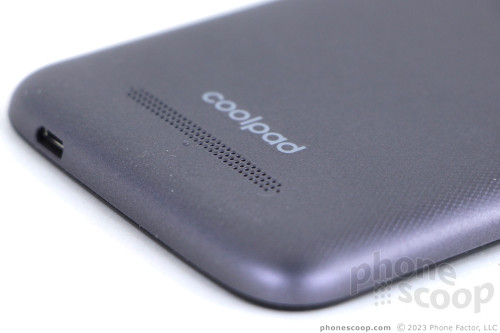
As noted earlier, the rear shell encompasses all four side edges as well as the entire back of the phone. It has microscopic triangles arranged in a diamond pattern to give it some texture. The triangles fade out near the rear corners and turn into smooth plastic along the sides. I rather like this design treatment. Some may not appreciate that the camera protrudes a bit from the surface of the phone. A single LED flash sits below the camera followed by the Cricket logo, which is painted and etched into the plastic. A series of small, circular holes near the bottom signal the location of the speakerphone. Coolpad's logo is just above the speaker.
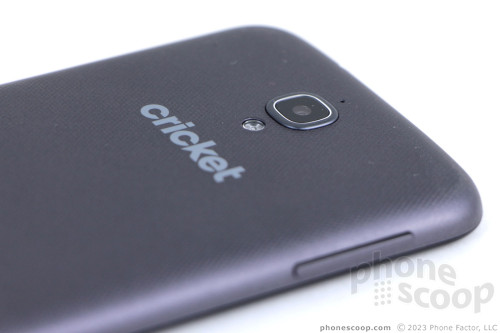
A small notch in one corner helps provide the needed leverage so you can pop off the rear shell. It comes off easily, but requires a bit of thumb work to snap back into place properly. With the cover removed you have access to the swappable battery. It's large in size, if not capacity. The SIM and microSD slots are stacked on top of one another. You'll need to remove the battery to access the SIM card, but you can swap memory cards with the battery in place.
The Coolpad Canvas isn't the trendiest handset ever assembled, and yet it instills a sense of confidence when used. The hardware easily exceeds the value of its price point.
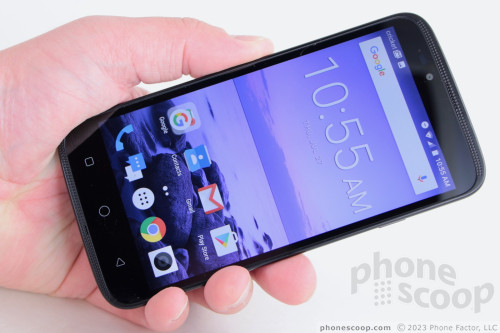
Screen
Coolpad gave the Canvas a 5.5-inch, 720p HD display. The screen is an IPS LCD panel. The display's size and resolution aren't the best match. The lower number of pixels means some on-screen items have hazy or ill-defined edges. You can't quite see individual pixels. I wish Coolpad had opted for a full HD panel, but I understand that the screen constitutes the lion's share of phones' costs: lower resolution means lower cost. The phone delivers more than enough light for indoor use, though I found it a bit hard to see outside under bright, sunny skies. Colors are accurate and viewing angles are very good for an LCD panel. It's a decent screen for this class of device.
Signal
The Canvas is sold by Cricket Wireless, which is owned and operated by AT&T. The handset includes support for LTE 4G, of course, and did fairly well in and around New York City. The Canvas was able to find AT&T's network everywhere I took it. It connected calls no problem, mostly on the first dial. The phone held onto calls at highways speeds just fine, and didn't drop or miss any calls.
It's important to point out that Cricket caps wireless data speeds at 8 Mbps. This is generally fast enough for most applications to run without issue, though I sometimes saw buffering and low-res performance from video apps such as YouTube and Netflix. Media-filled social networks refreshed content at acceptable speeds. You're not going to see blazing fast data performance from the Coolpad Canvas, but it certainly does well enough for most tasks.
Sound
The Canvas is a solid voice phone. The earpiece delivers just enough volume for use in and around your home or office. You'll definitely need to crank it up all the way to hear calls in noisier spaces such as coffee shops and city streets. Call clarity was very good. Voices in the earpiece were distortion-free and had a pleasing tone. People I spoke to through the Canvas said I sounded pretty good.
The speakerphone is punchy. Since the speaker is located on the rear panel, you'll get the best results by laying the phone down on a hard, flat surface. I found my hand sometimes covered the speaker when gripping the phone. Clarity via the speakerphone is just as good as the earpiece. I heard only small amounts of distortion when I pushed the volume up all the way. Speaking of which, the Canvas' speakerphone works fairly well when in a moving car when at its loudest setting.
Ringers and alerts were easily loud enough to get my attention, and the vibrate alert is solid.
Battery
Coolpad selected a 2,500 mAh battery for the Canvas and it does okay. I was able to get the phone from breakfast to bedtime without killing the battery entirely, but it was running low at the end of the day. The battery typically had about 20% left by the time I plugged it in at night, which can be panic-inducing for some. As I do for all reviews, I set the screen to auto-brightness and left most of the radios up and running. The only thing that takes a noticeable toll on battery life is shooting video. I'd say the Canvas offers acceptable battery life, though I won't be surprised if it doesn't quite manage a full day for power users.
If you're looking to reduce battery drain you can take advantage of the basic Android battery saver tool. Like every other Android phone, you can turn it on manually or have it switch on automatically when the battery reaches 15% or 5%. It helps a little.
The Canvas does not support wireless charging, nor does it support rapid charging. That's a bit of a bummer.
Bluetooth, GPS, NFC, WiFi
The phone's secondary radios do their job. I didn't run into any problems pairing and connecting the Canvas to other Bluetooth devices, such as headsets, speakers, and wearables. Voice calls sounded good via dedicated mono headsets, and fairly good through my car's hands-free system. Music streamed to a speaker sounded decent.
The Canvas's GPS radio worked well enough. Location accuracy was often as good as 20 feet, but averaged closer to 30. The phone pinpointed me in just a few seconds and kept up during real-time navigation.
The WiFi radio is vital and works well.
The Canvas does not include NFC.
Software
Lock Screen
The Canvas has a basic lock screen experience. It includes a simple active display, which briefly flashes notifications as they arrive. Like many versions of this tool, the notifications appear as white text on the black lock screen. The Canvas also includes a small LED in the upper left corner that blinks when you have new messages, etc.
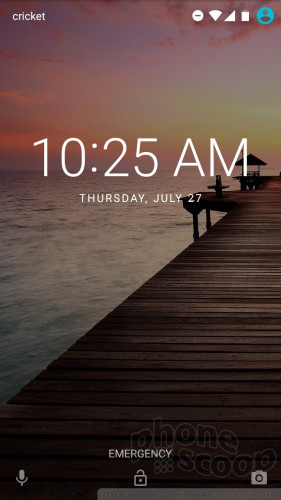
The clock is the most prominent feature of the lock screen. Notifications line up beneath it. They can be dismissed one at a time or en masse. The phone includes just two lock screen shortcuts, Google Assistant on the left and the camera on the right. The drop-down Quick Settings shade is accessible on the lock screen, which I appreciate.
In terms of security, you're limited to passwords, patterns, and PINs. (The phone does not have a fingerprint sensor.)
Home Screen
Smartphones Coolpad sells through carriers tend to run stock Android software as designed by Google. The Canvas runs a bone stock build of Android 7 Nougat, and that's something to cheer about.
All of the standard Nougat home screen features are intact. You have access to multiple home screen panels, all of which can be configured however you see fit. When you first boot the phone, the screens are littered with Cricket's apps and services.
The Canvas includes an app drawer that contains all the installed apps. The native Android app drawer doesn't support folders, but you can create folders on the home screens. The app drawer continues to offer app suggestions at the top and it contains a powerful search tool. The Quick Settings panel slides down from the top of the screen as you might expect. Nougat allows you to easily rearrange the the tools within, and notifications appear here as well.
The full Settings menu is typical for Android. Radio controls are closest to the top, with device, account, and general settings lined up beneath. The settings menu has its own search function to help you find and adjust settings quicker.
One of my favorite features in Nougat is the ability to resize screen elements; you can adjust how big or small icons and text are. This helps create more space on the home screen panels and can really help if you have poor vision.
The Canvas uses a 1.4 GHz Snapdragon 425 processor. I was nervous it might not be up to the task of keeping the phone running smoothly, but my fears were unfounded. The phone never felt slow or sluggish, even with just 2 GB of RAM. Screen transitions were smooth and most apps opened quickly.
Camera
Coolpad installed a slimmed-down version of its camera app on the Canvas. You can open the camera with a double press of the lock screen button, the lock screen shortcut, or the home screen app icon. If there's any app on the phone that's a little slow to open, it's the camera.

Coolpad's camera app is somewhat similar to that of Apple's iOS camera app. The viewfinder fills about 80% of the screen with two black strips holding the controls on either side. The shutter button, effects, and shooting modes are accessed on the right, while the flash, HDR, front camera, and settings are all accessed on the left. I like that both the flash and HDR can be set to on, off, or auto. Nine filters (black-and-white, sepia, etc.) are available by pressing a button tucked in the upper right corner.
The basic shooting modes include photo, video, night, and pro. You access each of these modes by swiping the entire camera UI up or down (just like iOS). Each works about as you'd expect them to. The night mode turns off the flash and essentially takes longer exposures. Results with night mode are mixed, as you have to hold the Canvas very still to get sharp photos. The "pro" mode gives you manual control over contrast, saturation, focus, exposure, ISO, and white balance, but not shutter speed.
You can access one other shooting mode, panorama, by pressing the menu button on the left. The pano mode works pretty well.
The full settings menu has a standard set of options. One thing I dislike is that the entire camera interface is locked in portrait mode, meaning the text (even in settings menus) is sideways if you hold the camera in landscape (some would say normal) orientation. Bleh.
The camera is definitely a bit slow and sometimes takes a hair longer to do things than it should.
Photos
The Coolpad Canvas has an 8-megapixel main camera. I was pleased with focus, white balance, and clarity, but exposure suffers a bit. The Canvas leans toward underexposing images, which leaves pictures looking a bit dark. See the headlight shot below as an example. There's no reason for that shot to be so dark. The HDR function helped in balancing out scenes with high contrast, but introduced a touch more grain.
I strongly recommend you touch the area of the image you want to focus on before you capture the shot, as this action also sets exposure. This gives you a quick preview of what you'll get and allows to you make adjustments ahead of time if necessary.
The 5-megapixel selfie cam doesn't offer any advanced beautification tools, but it does a good job with exposure and white balance. It suffers from the same exposure issue as the main camera, which leads me to believe the issue is Coolpad's software, not the camera sensors.
Both cameras can capture 1080p HD video and do a good job of it.
Novice and undemanding users can easily rely on the Canvas as their main camera, but advanced users might want something a bit more capable.
Cricket Stuff
Cricket crammed some bloatware onto the Canvas, but it's not too bad. The most questionable additions in my mind are two games, Final Fantasy and DFNDR, which together take up close to 200 MB of internal storage. You can delete these and several other apps.
The Deezer music service is on board. If you like streaming music, Deezer is a really affordable option at just $6 per month.
I do want to point out that the phone has just 16 GB of internal storage, and you have access to only 8.2 GB. You're going to want to supplement the storage with a microSD memory card, particularly if you plan to take a lot of pictures or video.
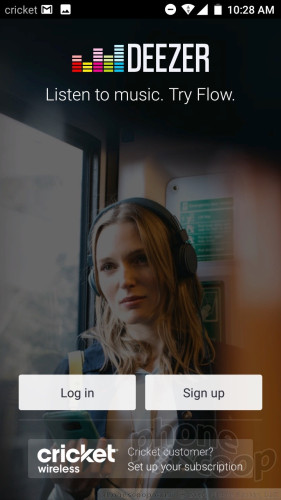
Wrap-Up

Coolpad has crafted a fine, if simple, smartphone in the Canvas. The phone is one of the least expensive in Cricket's lineup and should be appealing to those seeking a point of entry in the world of smartphones.
The hardware is boring in terms of design, and the volume toggle and screen lock button are fussier than they ought to be. Still, the removable back cover, removable battery, and swappable memory cards give the phone some flexibility. The screen is okay, as is performance on Cricket's network. Voice clarity is very good, especially for this class of phone, though data speeds aren't the quickest. Battery life is just on the edge.
The stock Android operating system is simple to operate and customize. You'll find a fairly flexible camera application on board. It takes decent pictures for this category of phone.
Have I mentioned yet that Cricket sells the Coolpad Canvas for just $50 flat? Yeah, it's that cheap. The phone more than delivers the proper amount of value when you consider how affordable it is. The Canvas is a good option for people who need a basic smartphone.
Comments
No messages


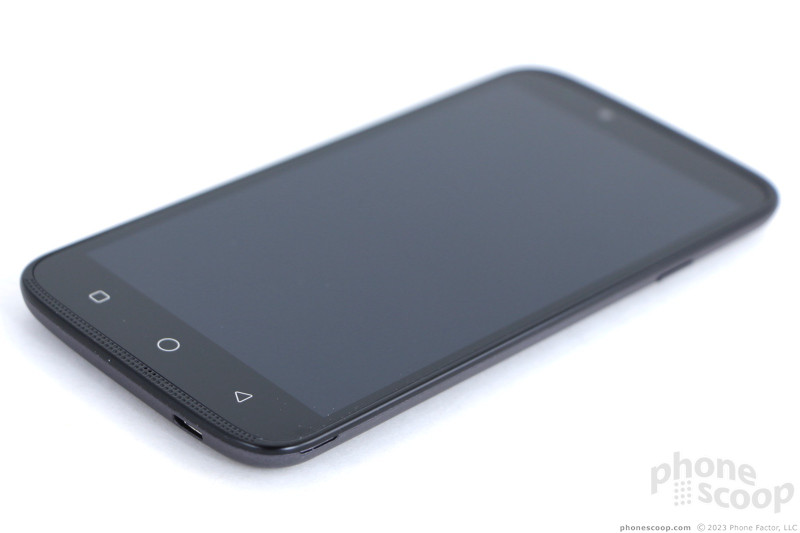


















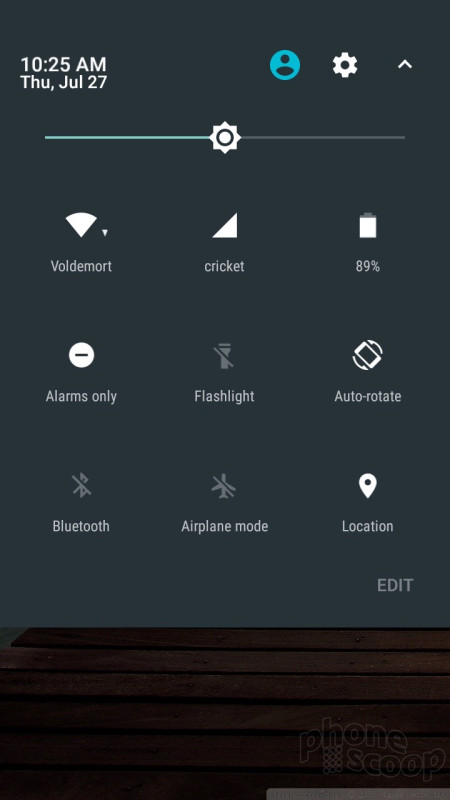




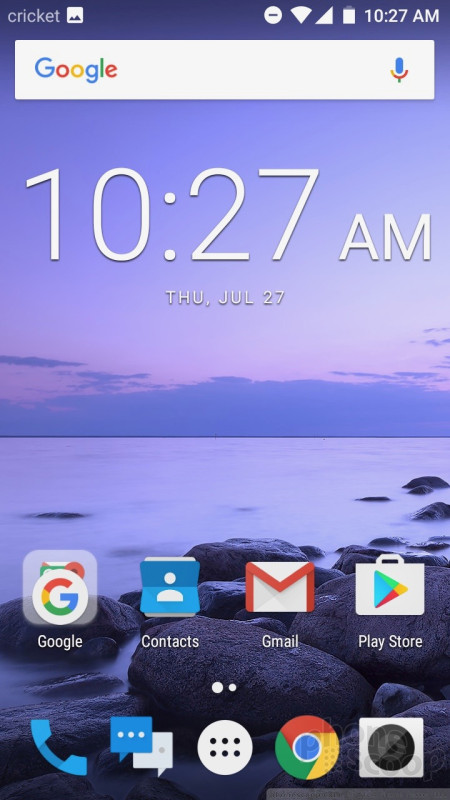





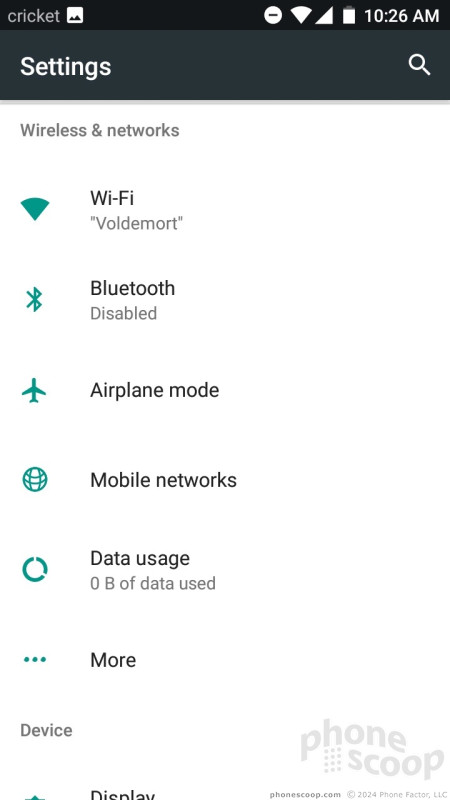






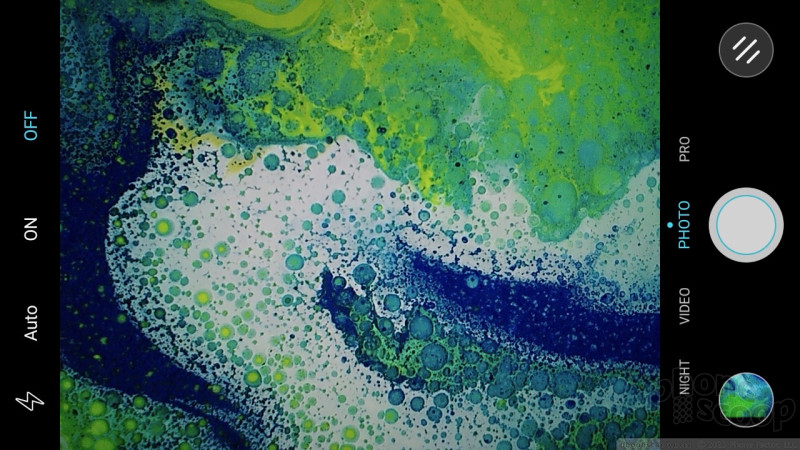





















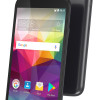 Coolpad Expands Unlocked Lineup with the Splatter
Coolpad Expands Unlocked Lineup with the Splatter
 Samsung Refreshes Galaxy S Series with S Pen, New Cameras
Samsung Refreshes Galaxy S Series with S Pen, New Cameras
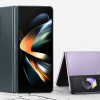 Samsung Refines its Foldable Phones
Samsung Refines its Foldable Phones
 iPhone 14 Plus Offers a Big Screen For Less
iPhone 14 Plus Offers a Big Screen For Less
 iPhone 15 Series Goes All-In on USB-C and Dynamic Island
iPhone 15 Series Goes All-In on USB-C and Dynamic Island
 Coolpad Canvas / Splatter
Coolpad Canvas / Splatter




